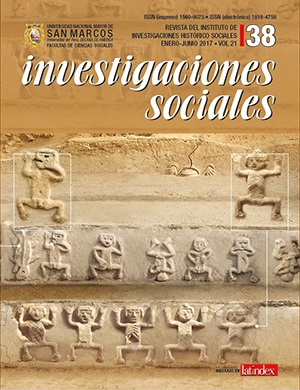Amaranth in Mexico: old productive strategies and new consumers
DOI:
https://doi.org/10.15381/is.v21i38.14213Keywords:
production, consumption, agro-food chains, food anthropologyAbstract
Based on the results of a case study in the town of Huazulco, Morelos (Central Mexico), on artisan workshops and small business that are dedicated to produce traditional amaranth sweets, we reflect on the current development of this agro-food chain. Amaranth is an ancestral product that contains a high nutritional value, which in pre-Hispanic times had a high consumption and ritual value, but after the conquest it was limited and keep for centuries a reduced presence. However, in the last decades the area planted with amaranth in the country quadrupled and increased its national and exportation demands. This apogee is related to changes in food patterns and the segmentation of the global agro-food market. The potential impact and benefit of the boom in amaranth production and demand differentiation for peasants, local rooting agro industries and rural communities such as Huazulco in Mexico is discussed.Downloads
Published
Issue
Section
License
Copyright (c) 2018 Kim Sánchez

This work is licensed under a Creative Commons Attribution-NonCommercial-ShareAlike 4.0 International License.
AUTHORS RETAIN THEIR RIGHTS:
a. Authors retain their trade mark rights and patent, and also on any process or procedure described in the article.
b. Authors retain their right to share, copy, distribute, perform and publicly communicate their article (eg, to place their article in an institutional repository or publish it in a book), with an acknowledgment of its initial publication in Investigaciones Sociales.
c. Authors retain theirs right to make a subsequent publication of their work, to use the article or any part thereof (eg a compilation of his papers, lecture notes, thesis, or a book), always indicating the source of publication (the originator of the work, journal, volume, number and date).













